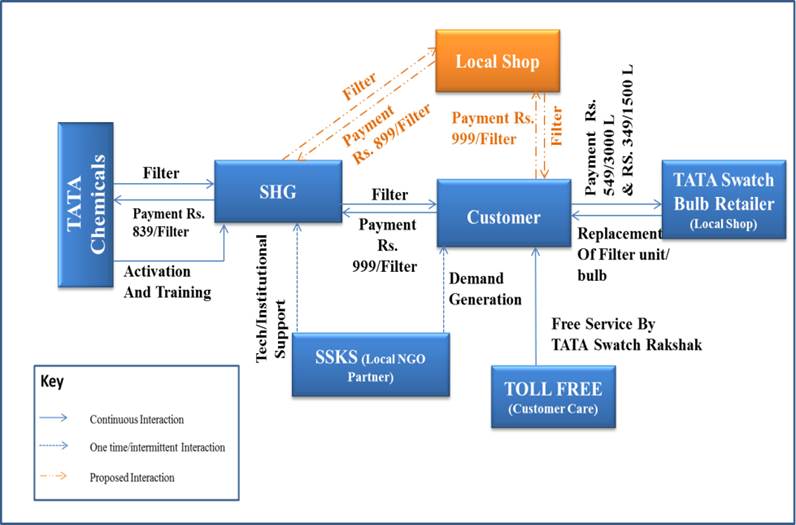|
Providing Low Cost Safe
Drinking Water P roviding safe drinking water to every household is our national priority but despite various government initiatives, approximately 170 million people in India have no access to clean potable water.It is imperative to reach out to this section of our people but in the process we encounter a number of challenges such as lack of awareness of the importance of safe drinking water, high upfront purchase costs, competing priorities for the family’s limited disposable income, business models poorly adapted to local market conditions and, last but not least, lack of appropriate, durable and safe technologies. To address these challenges, Development Alternatives (DA) has been working on developing and implementing innovative service delivery models of low cost safe drinking water solutions to villagers in far flung areas of the country. An emerging and, what is important, affordable technology solution is a nano-silver based water filter. Relevant research studies state that materials suitably treated or impregnated using nano technology based methods can filter water very effectively. Thus, DA piloted a market based nano filtration technology in ten villages and five wards of Chattarpur (M.P) and Hamirpur (U.P) using a Self Help Group (SHG) based service delivery model. In these areas, access to safe water is limited or altogether non-existent. Furthermore, it has been observed that water borne diseases are taking a toll on the health and livelihoods of the local communities but the affected people are unaware that the poor quality of their drinking water is the cause of their problems . Approach The presence of a strong-grassroot NGO was one of the initial criteria for the selection of the delivery model. A vital component of this model was SHGs whose members are local women enjoying strong social connections and has good knowledge of the local population. As product users they can best demonstrate its long term benefits while an additional income they get provides them sufficient motivation to promote the filters and sell them. Secondly, this business requires a relatively small working capital and the margins are suitably high. The business model facilitates a close interaction of the customers with the technology provider who offers the customers filter activation, training sessions and after sales services. Additionally, the adopted model involves local shopkeepers in the sale and replacement of filter units/bulbs. The financial barrier was overcome by engagement with a local SHG which supported the community through ‘Rahtriya Mahila Kosh’ for purchasing filters. The technological barriers were successfully addressed by selecting a location with low TDS levels. However, the model leverages the possibility of inclusion of finance depending on the area of implementation. But there still remains a lacuna in the supply and demand chain in Jhansi. TARA along with a local NGO partner maintains a close interaction with TATA Swach to overcome this challenge. Impact As of now, appreciable results have been obtained in Jhansi where penetration of 13% was registered in a period of three months. Also, an increased awareness of the importance of clean and safe drinking water and a strong local entrepreneurship development have been observed there. Way forward Though the model provides economic and health benefits to the community, certain challenges need to be faced and overcome to ensure the scalability and sustainability of the drive. Our experience in this matter says that for the community to create demand for the filters it is essential to bring about certain behavioral change in the population and these can take place only through awareness generation sessions directed at the population. q Sanghamitra Misra
|
